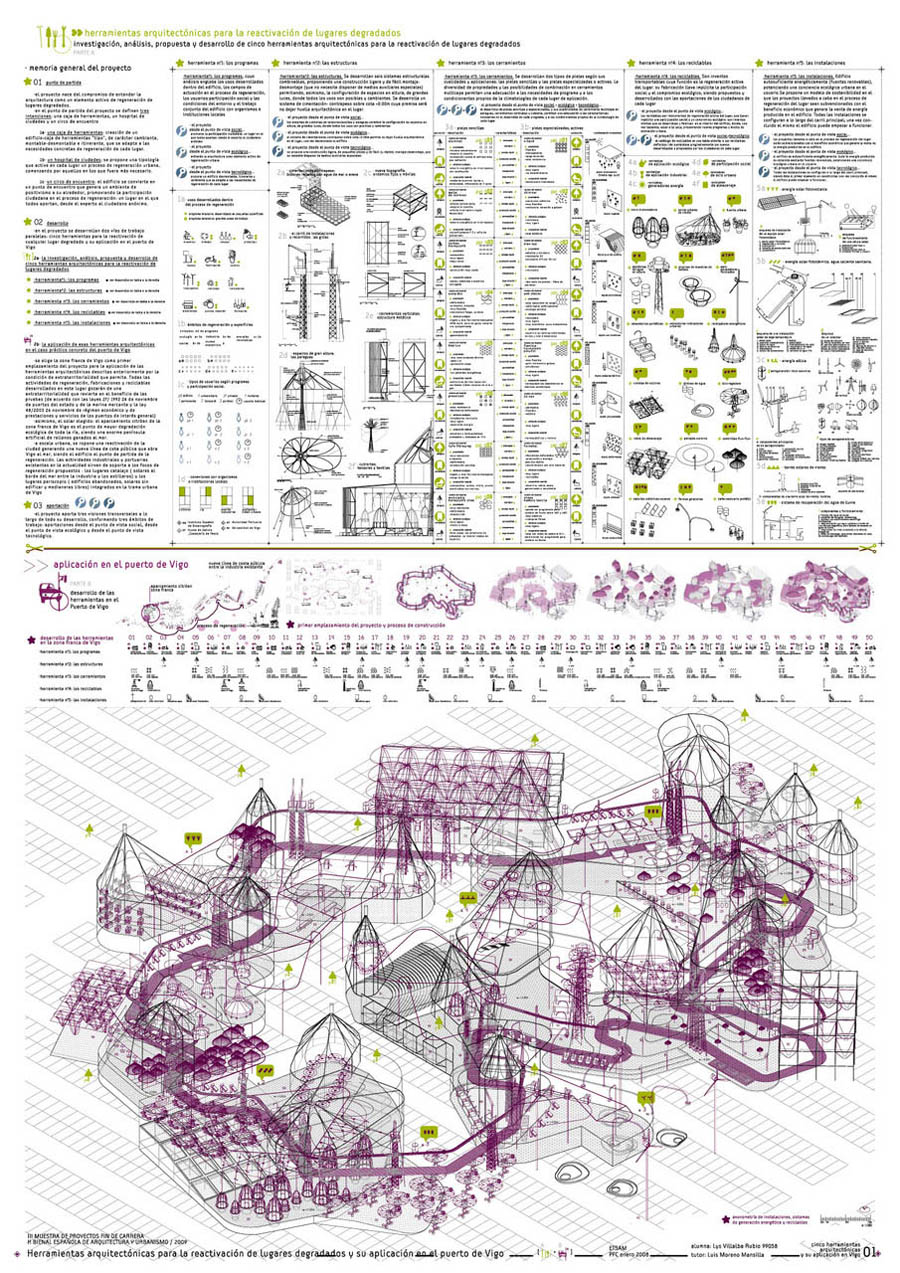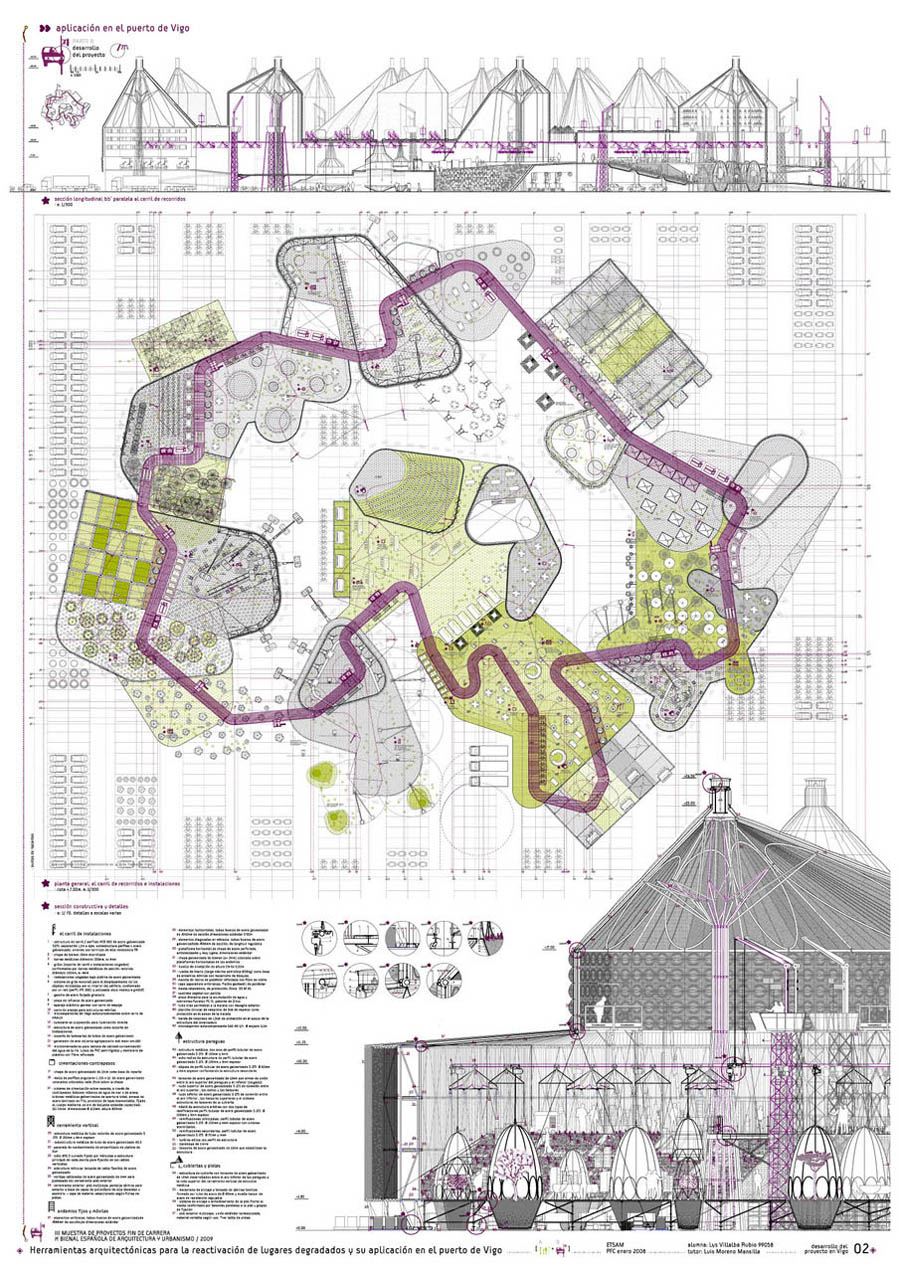The following project by Lys Villalba Rubio—then a student at ETSAM’s Departamento de Proyectos Arquitectónicos in Madrid—is pitched as a way of using architecture as “an active element” in the “regeneration of degraded places.”
 [Image: From a project by Lys Villalba Rubio].
[Image: From a project by Lys Villalba Rubio].
Based on my own non-existent Spanish (and the help of Babelfish), it seems that the project specifically proposes a “hospital of cities.” Villalba Rubio suggests that this is a new building type; acting like a social enzyme, it “activates in each place an urban regenerative process,” allowing spatial healing to begin.
There is also a “toolbox” and an “encounter circus,” the latter of which encourages “citizen participation in the regenerative process: a place in which all contribute, from the expert to the anonymous citizen.”
 [Image: From a project by Lys Villalba Rubio].
[Image: From a project by Lys Villalba Rubio].
Those three programs—toolbox, hospital of cities, and encounter circus—would be constructed atop a foundation system that is so easy to assemble and disassemble that it would leave no architectonic trace of its existence, Villalba Rubio writes.
Like an instant, inhabitable roller-coaster of pedestrian paths and new tent-like social spaces, complete with wind turbines and routes of mechanical transport, all coiling above formerly dead zones of the city, Villalba Rubio’s installation would being a strange flash of activity back into the urban skies—before disappearing altogether, leaving no traces, the architect claims, but in memory.
So, apparently, empty academic babble can be written in Spanish, too. 🙂
I think the way the project is presented in is very styled. Conceptually it reminds me of Constants 'new babylon' and archigrams 'walking cities' I wonder which contemporary notion led to this idea in our times.
The combination of this styling with an idea of cities that leave no trace does not make a lot of sense to me.
what a lack of arguments…